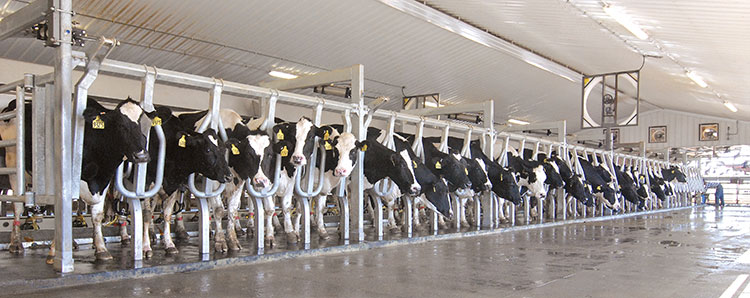
In addition to tens of thousands of cows that died in the storm just after Christmas 2015 or were culled soon after, its effects have hobbled milk production throughout 2016. According to USDA, New Mexico’s total output through September is 200 million pounds (3.36 percent) less than in 2015.
Good Mother Nature, meanwhile, blessed much of the Upper Midwest with spectacular growing conditions and crop abundance that multiple dairy producers have told me will likely be talked about for decades to come.
Violent milk price volatility is still out there. Dairy producers knew that 2014 was a wild aberration they may never see again. Even so, the inevitable crash that came in 2016 was a terrifying reminder that potentially fatal price volatility is still a risk.
During the first six months of 2014, Class III prices averaged $22.68 per hundredweight. The first six months of this year they averaged $13.48, including a “how is it possible?” May price of $12.76. It was a six-month bloodbath that made everyone who milks cows wonder how much longer they could hang on. And then, seemingly out of nowhere, Class III futures at the Chicago Mercantile Exchange soared roughly $2.50 during just the first nine days of June.
Technology is changing how dairies look. For more than 25 years, computers have transformed the way dairies gather, store, and use data to manage cows. They haven’t changed how dairies look, but equipment technology has.
One incredibly visible example is on-farm solar energy. Acres of collector panels are impossible to miss, at least in the West and Southwest they are becoming fairly common at new facilities. Another example is robotic milking. Automated rotary parlors are still in their infancy, but box-type units are seeing widespread adoption. This includes big dairies, where installations of 20, 30, 40, or more robots are beginning to appear. I’m confident many more are coming.
Marketers have begun dictating breeds that farmers can’t use. This one is brand new and it so far involves just chickens, but its implications are scary for all food producers.
In March, high-end niche grocery chain Whole Foods announced that by 2024 all of its poultry-supplying farms must stop using modern, fast-growing “broiler” breeds and switch to slower-growing varieties. The company’s website said the move is due to “unresolvable welfare issues inherent in fast-growing breeds of chicken.”
Dairy producers should not entirely dismiss this as a crazy marketing scheme, or think there aren’t dots that can be connected between the breed health and culling characteristics of each breed and animal welfare perceptions. Holsteins, in fact, might become the biggest targets.
California’s run is done. If I were a California dairy producer I would be getting ready to head for the exit. The Golden State had an amazing run in the national dairy spotlight in the 1970s, ‘80s, and ‘90s. But its glory days are done and the handwriting was on the wall long before the current 5-year drought began.
Too little understanding about or appreciation for agriculture, too much political attention to activist agendas, and too little regard for science have produced a toxic environment for food producers. New laws passed this year to increase minimum wages and expand mandatory overtime rules have only made the message to farmers in the nation’s biggest food-producing state louder: Get out.
Big surprises still happen. Perhaps the biggest thing the dairy industry learned in 2016 – the whole world, in fact – is that sure things aren’t always sure. Years from now, debate about why the U.K. Brexit and U.S. presidential votes went the way they did may still be going on. Why they happened isn’t the biggest takeaway message. That they sometimes do happen is – and that means unexpected outcomes should always be considered for every situation.
This article appears on page 93 of the December 2016 issue of Hoard's WEST.








